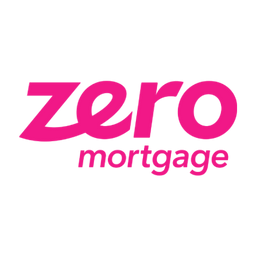There are many reasons why you might consider refinancing your home. Take advantage of lower interest rates, reduce the length of your loan, switch from an ARM to a fixed-rate mortgage, or look to use your equity. No matter the reason, before you begin an application for refinancing you should check your credit and shop around for a good lender. Once you have a lender selected you will need to make an application and provide all the necessary documentation. Your lender will have your house appraised, and if approved you can sign the loan documentation. Finally, after your credit and employment are reconfirmed, you can close on the loan. And though you’ll have to pay some fees, you will then have a new monthly mortgage payment, and you can start saving dollars right away.
Benefits of Refinancing your Home
According to a 2017 study released by Brigham Young University researchers, 20% of Americans failed to take advantage of lowered interest rates to refinance their homes in 2010. American homeowners ended up paying thousands of dollars more on their loans than was necessary, collectively missing out on $5.4 billion. All because they didn’t take the time to research and determine if refinancing would be right for them. That was in 2010 but according to mortgage statistics released last year by the Federal Bank of St. Louis, American home equity levels are the highest they have ever been (i.e. $13.9 trillion). With so much equity available and the Fed beginning to raise interest rates, now would be a good time to consider if refinancing is right for you. Here we will discuss the reasons why you should consider refinancing your home, and how you would do it.
Before we begin we need to make an important clarification: refinancing your home is not the same as applying for a second mortgage. In one case, you are getting a second mortgage based on your home equity. Acquiring a second mortgage would leave you in the position of having to make two sets of monthly payments instead of one. Refinancing leaves you with a single monthly payment.
Why Consider Refinancing Your Home?
We have already mentioned one reason above: changing interest rates. Preferably: interest rates lower than what your mortgage is based on. Similarly, you might also consider refinancing if your credit rating has improved relative to when you acquired your mortgage. In both scenarios, the objective is to lower your monthly payment. But did you know you could also reduce the length of your loan through refinancing? Conversely, you could reduce your lower your monthly payment at the cost of extending the terms of your loan. Another reason (perhaps the most important) is the ability to switch from an adjustable (ARM) to a fixed-rate (and eminently safer) mortgage. Finally, you might consider a cash-out refinancing plan if you are looking to use the equity in your home to borrow a little money.
So how do you go about refinancing your home? Refinancing your home is very similar to getting a mortgage. So while you may be familiar with the process, it also means you’ll have to do it all over again. Let us take a closer look at the refinancing process step-by-step.
Refinancing Your Home: Step By Step
1. Check Your Credit
The first thing you will want to do is the most fundamental step in all major financial decisions: check your credit. Having mediocre credit might not necessarily kill your chances of securing advantageous refinancing terms, but the higher your credit score the better your chances are. And as mentioned above: the higher your credit score relative to your original mortgage application, the more likely you are to get refinancing that is better than your original mortgage.
2. Looking For A Lender
The second step in the process is another fundamental step in making big financial decisions: Looking for a good lender. Your first instinct might be to go through your mortgage lender, but is your mortgage lender offering you the best terms? According to information provided by U.S. News and World Report, Bank of America has refinancing for as little as 5% equity but does not have particularly low-interest rates for all its mortgage products (compared to other lenders). On the other hand, PNC Bank offers 0% equity loans (to borrowers with at least a 660 FICO score), but most of its loan origination fees range between $800 and $900. So, make sure to check and compare mortgage rates before committing.
3. Apply
The third and fourth steps are very self-explanatory: you’ll have to make an application and submit all the appropriate documentation. This is the step where you will provide your chosen lender with all the documentation that they require. Expected documents include proof of income and employment, tax forms, and proof of insurance.
4. Appraisal
The next step is to get your home appraised. The lender will order an appraisal, and someone will be sent to your home for a survey of the property. If the appraisal meets the lender’s approval and your documentation has gone through, the penultimate step will be actually signing the loan documentation.
4. Approval
Finally, after your credit and employment status have been reconfirmed, you can go through the closing process. This is the part where your old mortgage will be paid off and you will be informed of your new monthly mortgage payment. This is also the part where you can expect to pay some closing fees.
And there you have it! In just a few easy steps you have refinanced your home and have a new (hopefully) lower, monthly mortgage payment.











